Susumu Shingu: An Ode to Nature
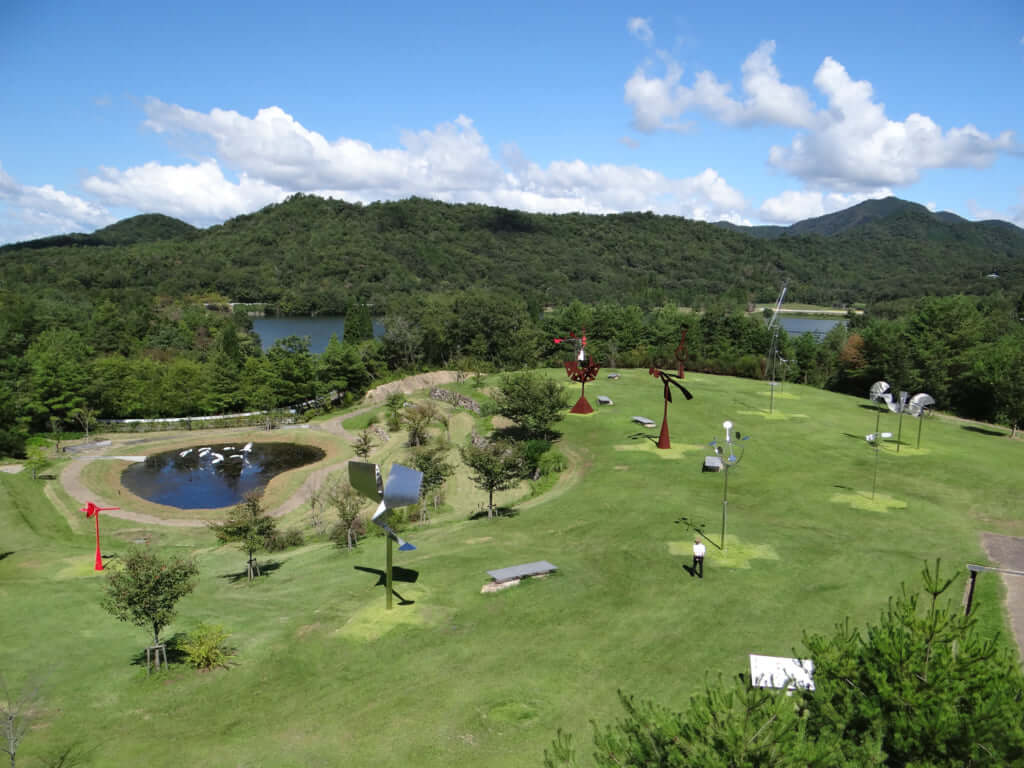
Wind Museum Susumu Shingu (Sanda Japon) 2014 © Jeanne Bucher Jaeger
The works of Japanese artist Susumu Shingu border on meditation. When the viewer looks at his installations, some parts of which come to life thanks to the force of the wind in a perpetual movement, but one which has been cleverly orchestrated by the creator, time seems to stand still. The viewer is therefore immersed in a sort of bubble, in which the only things that matter are nature and movement.
Sculptor, mechanical engineer, children’s author, architect of a utopian village… Susumu Shingu’s body of work is somewhat shape-shifting, but the theme that connects all of his creations is nature.
‘My works are ways of translating the messages of nature into visible movements’, explains Susumu Shingu. ‘What I try to show is the beauty of our planet and how lucky we are to be born here as human beings. For me, there are no boundaries between art, mechanics, science and the production of picture books and artistic practice’.
Natural elements used as materials
The artist’s playground is the outdoors. He uses parks and gardens and areas around rivers or ponds to install his moving sculptures, created from high-tech materials and using innovative technology, the movements of which Susumu Shingu regulates in fine detail. However, beyond the materials used to create his moving sculptures, Shingu seeks to harness the natural forces of water, wind, waves, energies and gravity as if to breathe a life force in to them to make them mobile.
‘It’s not just beautiful, it’s scientifically adjusted’, explains Bernard Vasseur, Director of the Centre de recherche et de création Elsa Triolet – Louis Aragon and author of Shingu, a book presenting the work of the Japanese artist, of whom he is now a close friend. While people might seem surprised by the artist’s use of non-natural materials to create his sculptures, he sweeps this aside by justifying it immediately. ‘It has to be solid. Susumu Shingu does not create land art, he does not take elements from the landscape to produce his works. His work is exposed to the outdoors, to the wind. And in Japan, wind can take the form of a typhoon’.
As well as being exposed to the four winds, Susumu Shingu’s work travels across the world, like Wind Caravan, an installation of mobiles which has passed from Japan to New Zealand via Finland and even Mongolia. This is a good way to test the structures, and also to gauge how his work is received by diverse cultures. The latest scheduled stop is the Château de Chambord, where the artist’s work will be exhibited until March 2020.
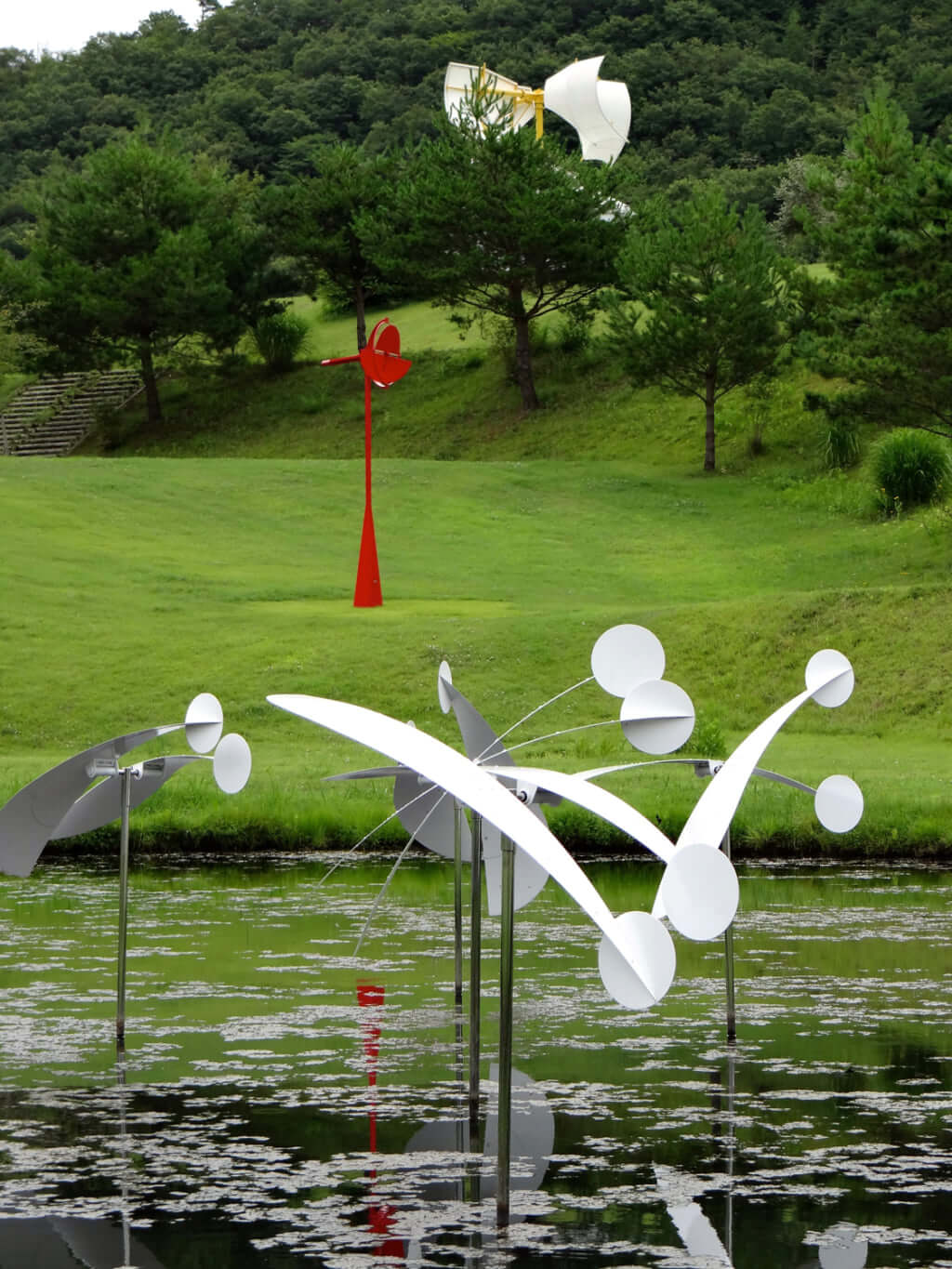
Wind Museum Susumu Shingu Sanda Japon 2015 © Jeanne Bucher Jaeger
An Italian connection
This stopover at Chambord is of particular importance to the artist. His exhibition, Susumu Shingu: A Utopia for Today, comes a few months after an exhibition entitled Chambord, 1519-2019: Building Utopia, which featured the work of Leonardo da Vinci, among others. ‘2019 is the 500th anniversary of the death of Leonardo da Vinci. It was a bit like Leonardo had called me himself to participate in the exhibition’, explains Susumu Shingu. Because, as with nature, the artist has close links with Leonardo da Vinci. ‘When I look back, Leonardo has always appeared in my life at the perfect moment. The first time was in 1956, when I started studying at the University of Fine Arts in Tokyo. My instinct told me that it was just a crossing point, even if getting into this university was a good opportunity for me. I think I heard Leonardo’s voice calling me at that moment’, he continues.
The young Shingu continued his university studies before heading to Rome thanks to a study bursary from the Italian government. This was a transitional point in the creation of his artistic identity. Thus, he abandoned figurative painting for abstract, 3D sculpture before taking up sculpture activated by the wind. ‘After having started to focus on the creation of sculptures moved by the wind and water, Leonardo gave me some hints about different styles and techniques and sometimes gave me advice’, declares the artist who, like the Italian master, fills his sketchbooks with ideas throughout the day so as not to forget a single idea.
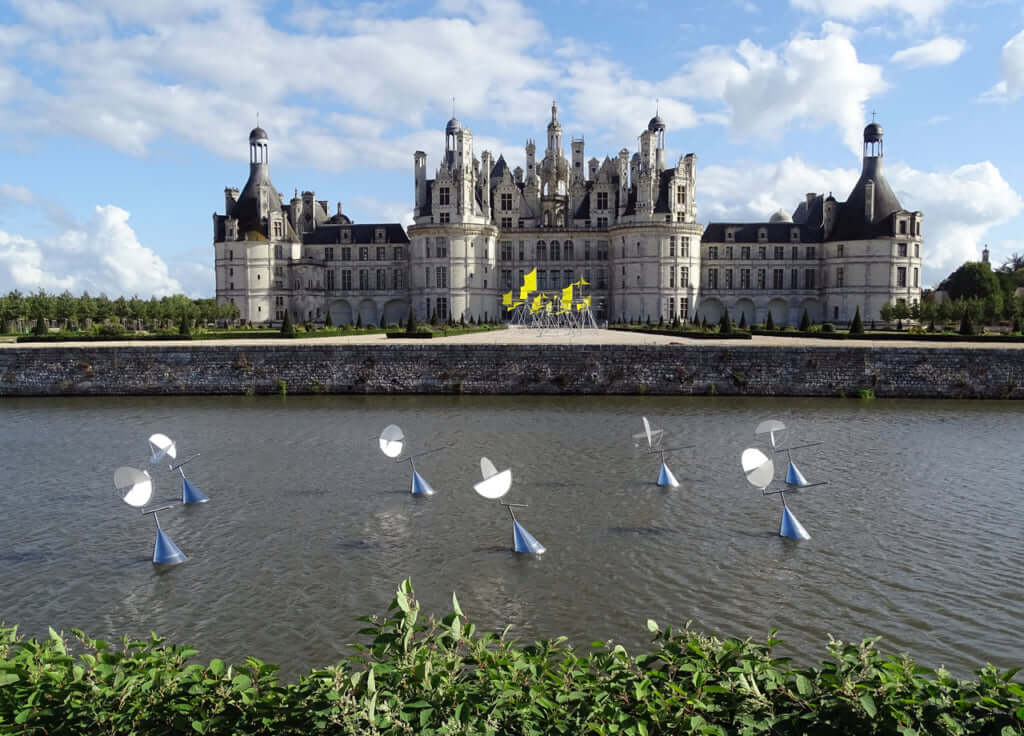
Susumu Shingu, a utopia in Chambord © Susumu Shingu
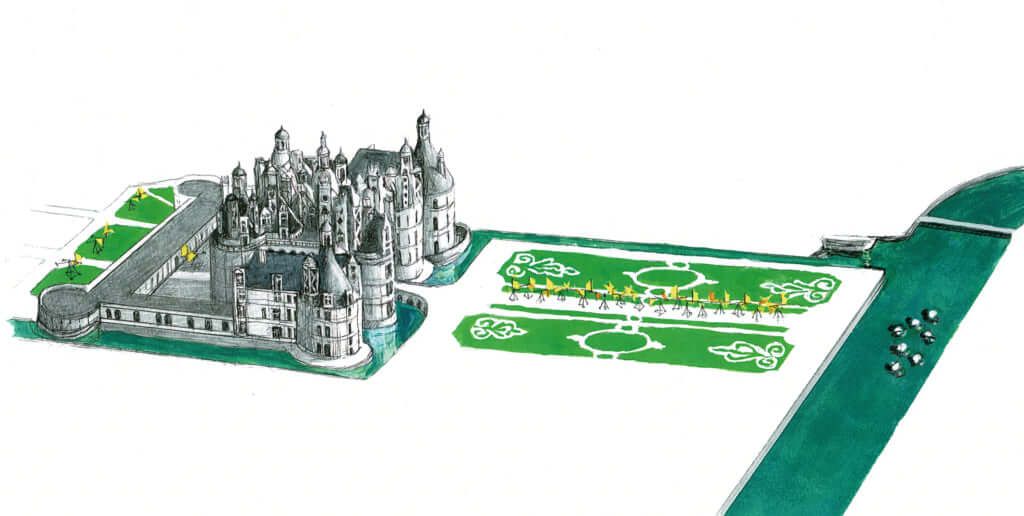
Susumu Shingu's drawing © Susumu Shingu
A utopian village project
Today, the 82-year-old artist is seeing one of his most ambitious projects become a reality: the creation of a utopian village entitled Breathing Earth. Situated in the city of Sanda, north-west of Osaka in Hyogo prefecture, Breathing Earth will encompass a museum, theatre, workshop and cafe, all linked in a circle. And, of course, it bears the mark of the artist, as there will be a coloured mobile sculpture at the top of each construction, some of which will be connected to mechanisms which make it possible to move objects in the room. The realisation of this project will begin next spring.
‘I’m trying to create a workshop with people who share the same thoughts as me, without destroying nature further, as a place where we can take pleasure in thinking about a future way of life’. This utopia could be seen to resemble that of da Vinci, when he designed a concept of an ideal city for Francis I of France. For Susumu Shingu, the priority is still, as always, this ode to and respect for nature.
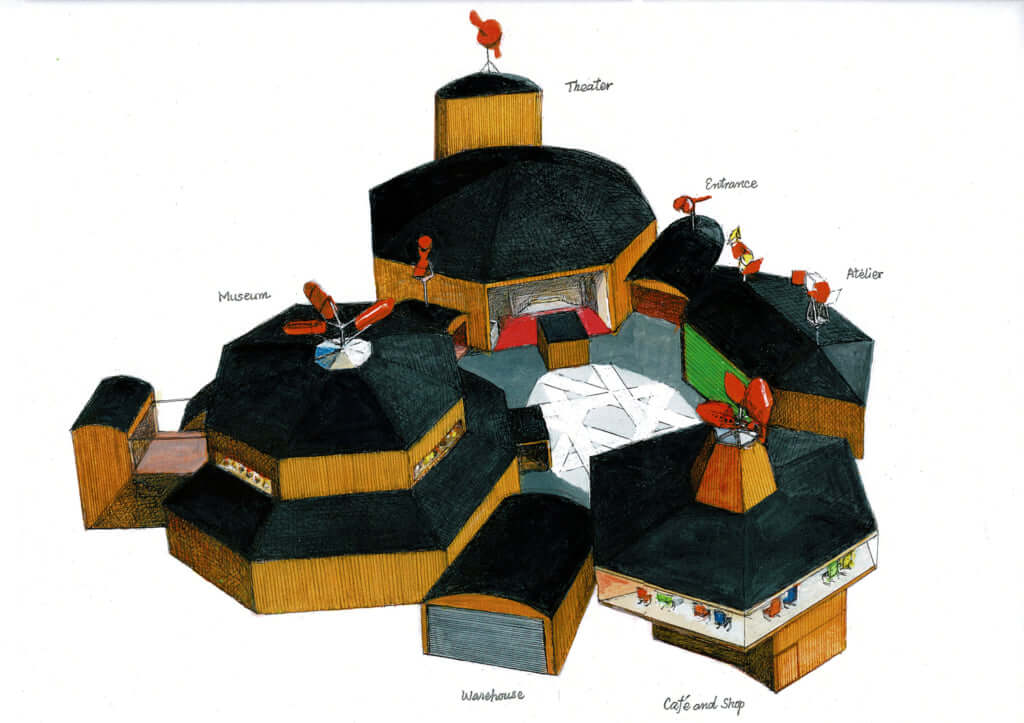
Atelier Earth dessin 2019 © Susumu Shingu
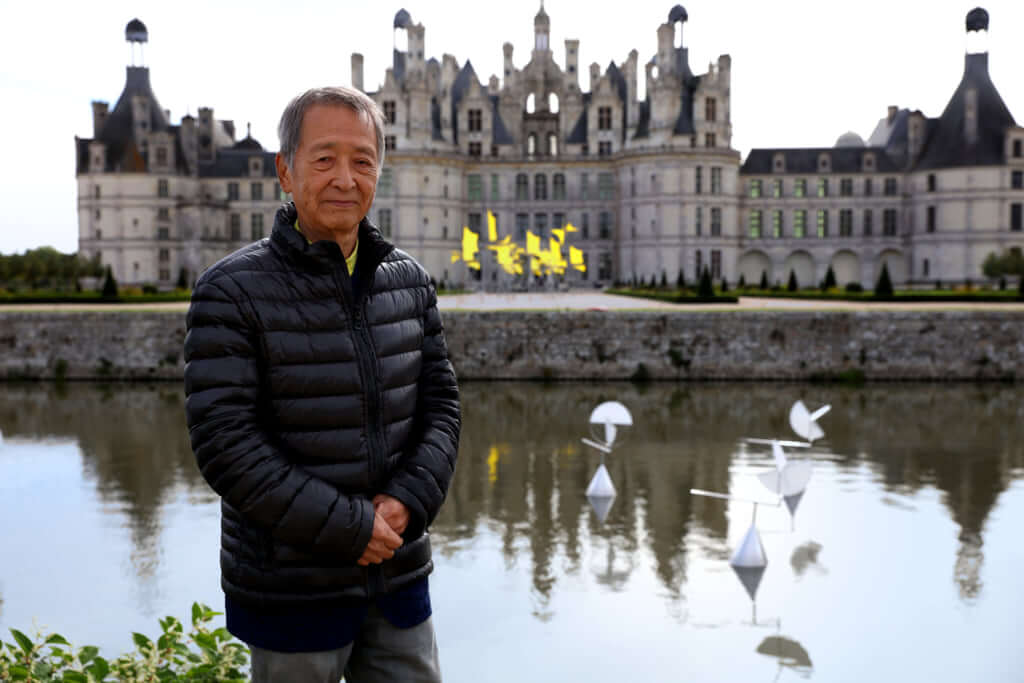
Susumu Shingu © Domaine national de Chambord - Olivier Marchant
TRENDING
-
Yakumo Saryo: A Culinary Voyage in Tokyo
Shinichiro Ogata makes objects from glass, ceramics and bronze but is also a fantastic cook. Have a taste of both his talents at restaurant Yakumo Saryo.

-
WA BI GIN : (An Old) Affair of Passion
The Japanese distillery Hombo Shuzo, first known for their shoshu, decided to launch itself into artisanal production of gin. Thus, WA BI GIN was born.

-
Gome Pit, the Pop-Up Bar in a Waste Treatment Facility
Japan never ceases to surprise. Gome Pit is a pop-up bar with an unobstructed view over a pit where tonnes of waste are piled up before being incinerated.

-
A Japanese Tea Room Perched Atop a Rooftop
The building, in keeping with the minimalist style of its creator, offers a splendid view of Vancouver Bay and the surrounding mountains.

-
Discover Japanese Gastronomy Through The Solitary Gourmet Manga
This illustrated black and white album follows its lead through various bars, celebrating the Japanese art of living.





